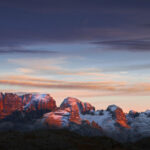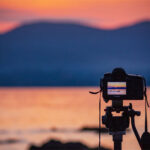Let’s face it, lighting equipment can be pretty expensive once you add up all the power supplies, light stands, light modifiers, power packs, slaves and whatnot. This is where DIY and nice guys like Kevin Kubota come in. The video below explains how to make your own lighting scrims inexpensively with a quick trip to the hardware and fabric store:
Light panels are great for diffusing light both indoors and outdoors. Position it outside to maximize the effect of sunlight of your subject, or use it with a speedlight for a soft window light effect.
What You’ll Need:
(3) 10-foot sections ¾” PVC Pipes
(4) Elbow ¾”
(2) T-fittings ¾”
White ripstop nylon 60” by 2 yards
Elastic cord ¼” by 10 feet
Tools:
Small hacksaw
Marker pen
Tape measure
Instant glue
Sewing machine
Step 1:
Measure the pieces and cut the PVC pipe. Divide one 10-foot PVC pipe, into two 34-inch sections and one 36 1/2 –inch section. This makes half of the frame.
Step 2:
Lay out all the pieces so that you’ll have a general idea of what everything will look like once assembled.
Step 3:
Glue one side of the pipe to the T-fittings to make it easier to dismantle. Mark which sides to pull apart.
Step 4:
Run the elastic cord through all the pieces to help hold it together.
Step 5:
Stitch/sew the elastic pieces onto the corners of the nylon fabric.
Step 6:
Set it up!
Like This Article?
Don't Miss The Next One!
Join over 100,000 photographers of all experience levels who receive our free photography tips and articles to stay current:












My first experience with “Tinker Tools” was back in the late 80s when my teacher showed us Dean Collins videos and a number of his creations. I still have the “Cromazones” decoder ring on creating any color of background with just f/s and flash/strobe power.
I thought the same thing, for a fraction of a second, that Kevin was not having an original idea about the Dean Collins or Scott Smith diffusion panels, but who cares. Kevin has a much larger audience than either of those fellas ever did and he is sharing a simple, cheap idea. I made them years ago too, after seeing Scott Smiths lightingmagic.com site and was on a very thin budget. They work great, and still have them but simply don’t use them much. I should again.
Thanks Kevin for sharing! Merry Christmas.
This is a fun and unful video. It gives the used the complete details using video as well as written down details.
Yes I remember Dean Collins – I doubt if it was Mr. Collins idea. I don’t see anyone else objecting. Are the plans copyrighted? I doubt it. Photographers are usually use to making things to there needs. This has nothing in it that would imply any infringement..
I made several panels years ago and first looked at ripstop nylon. What I found next to the ripstop at Joann’s that I used was Sport Nylon. I liked it because it didn’t have the little zig-zag rip stitching and was a lot closer to the type of material used in my umbrellas and soft boxes. It cost a dollar more a yard than ripstop but when you only need about 3 yards, it doesn’t add much to the cost. I also made a two part 6 foot hinged panels, using the figure 8 clamps used on chain link panels to join the panels. That gave me a hinge joint so I could open and close the two panels to different angles. With it set from a 45 degree to 90 degree angle the panel would stand on it’s own. One 6 foot panel was made from the white Sport Nylon and the other panel was made from black Sport Nylon. I used the black to block light when I needed it, either from the object or on the camera side so I didn’t get lens flare or in my eyes. The panels worked great and gave me lots of nice soft diffused lighting and was very adjustable. I had control by how close I put the panel to the subject or object and I could control how close or far away I put the light to the panel. I also used PVC and I think the whole thing cost about $25 with parts left over… I also have a tendency to over build something. :D
I enjoyed your tutorial.
Mike
More importantly is the time and effort he put forth to make a very well thought out, informative and entertaining video showing how to do this. I applaud him!
In December of 2000 I purchased a book titled Studio Lighting Made Simple written by Scott Smith, a Texas based photographer. In it he describes, with drawings, the same type of panel, only he called it a diffusion panel. He never called it his own invention/design and never attempted to patent it, to my knowledge. I have made AM radio antennas from theory that looked awfully like others that I have seen for commercial sales. I don’t consider those antennas as rip-offs. He’s trying to help and I say thank you.
Jim C
It would be nice if he include the finished product, difference between using other lighting.
Calm down, John…take a breath and consider that maybe Kevin came up with a similar idea all on his own. Perhs he didn’t intend to plagiarize at all.
Colorado Wing and PC 2053 have no knowledge whatsoever concerning these light panels. Colorado Wing your comment about Kevin Kubota having a bigger audience than Dean Collins is completely 1000% laughable which goes to show you know nothing about the history of Dean Collins and what he is done as a photographer and photographic educator. Kevin Kubota doesn’t even have the spit to lick Dean Collins boots when it comes to photographic education and yes that video is completely 1000% Dean Collins. Scrims have been used in the movie industry for years to say that Dean Collins created the idea of scrims is of course not true. However he did create the idea of creating scrims from PVC pipe and rigging them with bungee cord so that they could fold down and that they would be very suitable for photographers that is truly Dean Collins’s idea and nobody can dispute that. As for Scott Smith he got the idea from Dean Collins. There really isn’t anything else to say about Scott Smith. Again to be very clear Dean Collins created light panels out of PVC for photographers Period!!!!!!
Kevin ripped this off from Dean Collins. Dean was a well known photographer and communicator of photographic knowledge. Dean published a set of plans he referred to as, “Tinker Tubes” made from PVC that gave you the option of making yourself or you could buy his brand that were marketed by him called Lightform Panels.
Kevin is not much more than plaigorizing on this!
Shameful!
That was awesome and really easy to follow. I’m going out to build my own today! Thanks for sharing!!!